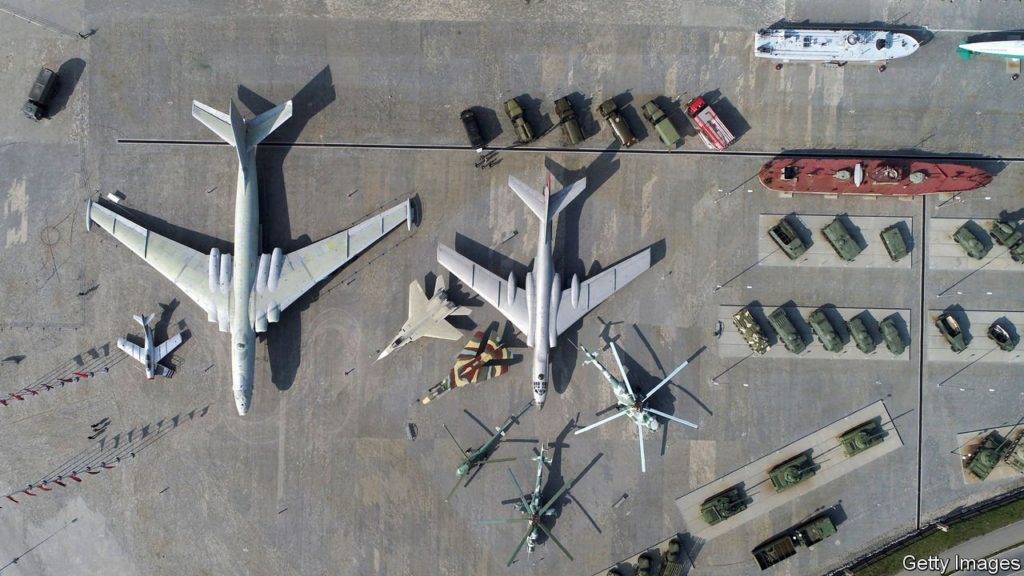Experts had expected the invaders to use their planes to pick off Ukraine’s forces at will

10 March 2022 (Krakow, Poland) – Billions of dollars have been poured into Russia’s warplanes over the past decade. Between 2009 and 2020 the air force gained around 440 new fixed-wing aircraft, as well as thousands of drones. At the outset of war, it was widely assumed by defence analysts and officials that Russia would quickly destroy its enemy’s air force and roam freely over the country, using its air superiority to pick off Ukrainian forces at will.
Yet in the first two weeks of combat, Russia’s air force has played a minimal role. Air activity is difficult to track and Russian air strikes may have increased in both number and complexity in recent days. It is clear, though, that the Russian air force has held back its full capabilities. A report from the Royal United Services Institute, a think-tank in London, notes that fast jets have conducted only limited sorties in Ukrainian airspace, in singles or pairs, always at low altitudes and mostly at night.
When hostilities began, Russia sent a volley of cruise and ballistic missiles towards Ukraine’s air bases in an attempt to ground its planes and air-defence systems, and to hobble its radars and anti-aircraft missiles. That effort failed. Ukraine had wisely dispersed its air-defence systems, making them harder to find. American defence officials say that Ukrainian air and missile defences consequently “remain effective and in use”—a claim that can be corroborated with scores of open-source intelligence (OSINT) researchers.
The result is that Russia has lost substantial numbers of aircraft. Stijn Mitzer is an Amsterdam-based analyst and his colleagues at Oryx, a blog, have studied imagery available on social-media sites to establish the number of proven Russian losses. These currently run to 11 fixed-wing aircraft, 11 helicopters and two drones. Ukraine’s government claims to have destroyed at least 39 planes and 40 helicopters, though these figures are unverified. By way of comparison, America lost 40 or so fixed-wing aircraft during the entire five-week air war with Iraq in 1991.
Another reason they have lost so many aircraft is that Russian pilots are forced closer to the ground, and thus within range of shoulder-fired missiles. In its war with Georgia in 2008, Russia’s air force was almost entirely limited to firing unguided or “dumb” bombs. Now it has precision-guided munitions, which can hit targets using satellite-navigation and other means. But it appears the bulk of its arsenal is older weapons, requiring closer-to-the-ground flights.
I skimmed through a stack of OSINT provided images which appear to show the wreckage of a Su-34 attack jet shot down over Chernihiv suggest it was armed with unguided bombs. This is telling, says Oleksandra Matvvicik, a military analyst who is still hunkered down in Kyiv, because Russia’s Su-34 regiments are “the most proficient and regular users” of precision munitions in the air force when available. Images released by Russian state media show other Su-34s parked on a runway armed with more unguided weapons; others reportedly from Chernihiv and Kharkiv show exploded unguided bombs littering urban areas, including one that landed in a house.
One theory is that Russia’s stock of precision-guided munitions is running low. More likely, argues Michael Kofman of CNA, an American military think-tank sharing its finding on Twitter, is that Russia is holding some in reserve, either for later in this war or in anticipation of a bigger one. Either way, the use of dumb bombs creates a dilemma. As Tim Robinson of Britain’s Royal Aeronautical Society notes, pilots can either fly low to see targets and risk getting shot down or bomb from high or medium altitude with less accuracy.
But it plays into what I learned here in Krakow from a Polish military historian at Jagiellonian University (the motherland-of-university-information if you want to find out about anything involving Russia, Ukraine, Eastern Europe, etc.) In recent weeks, America, Latvia and Lithuania have sent Ukraine smaller, shoulder-fired Stinger anti-aircraft missiles, which home in on the hot engines of aircraft flying below roughly 3,500m. The weapon rose to prominence during the Soviet-Afghan war in the 1980s, when CIA-supplied Stingers were used by the Afghan mujahideen to take down more than 300 Soviet helicopters and 100 jets. Video footage posted by Ukraine’s defence ministry on TikTok and Twitter, shows a Stinger-type missile streaking into a helicopter flying low over a field supposedly near Kyiv (you’ll see it tomorrow in one of my “war tech” pieces).
Russia’s failure to take out Ukrainian air defences means that Russian planes cannot freely patrol the skies to ward off Ukrainian ones, and that attack aircraft cannot provide proper air support to troops on the ground. Ground-surveillance and airborne early-warning aircraft must stay back from the battlefield, reducing the flow of intelligence.
There may be a lesson for NATO. Russia’s initial failure to gain air superiority could be explained away by the Kremlin’s secrecy over the decision to go to war and a lack of planning time, says (just retired) Major General Mick Ryan who has been posting daily reports on Twitter. But in his view, the air force’s passivity could also reflect inexperience or incompetence. Russia’s air force, with less flying time per pilot and lacking in the advanced simulators and extensive training ranges available to Western air forces, “lacks the institutional capacity to plan, brief and fly complex air operations at scale”. The coming weeks will clarify whether that is really so.